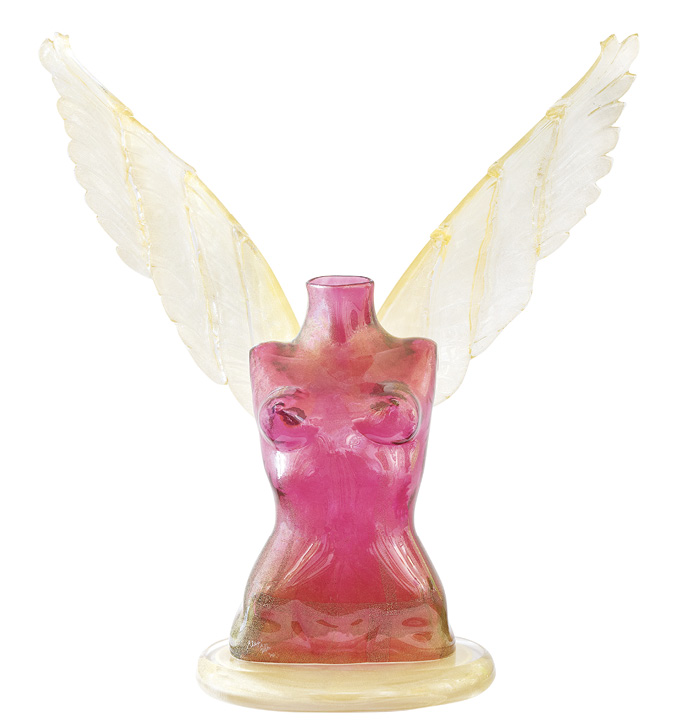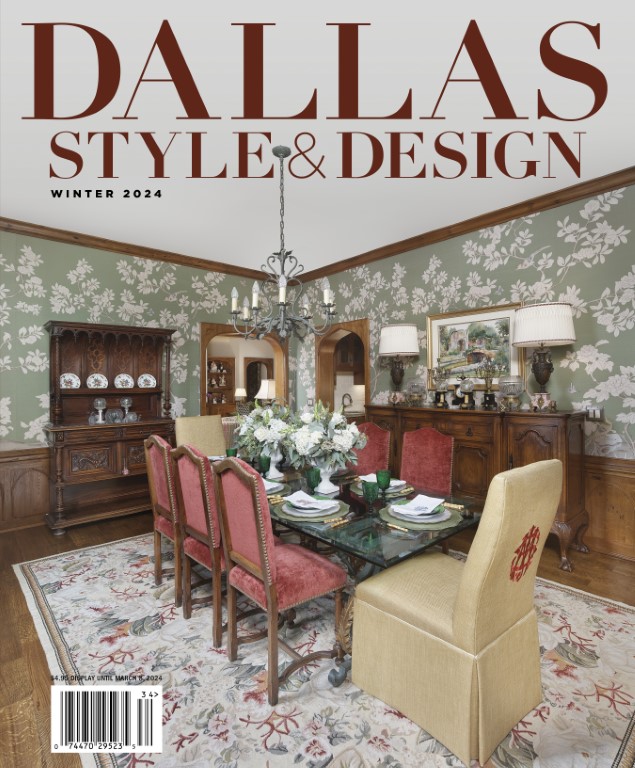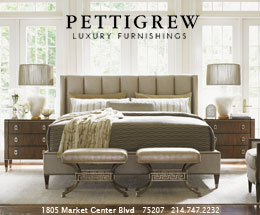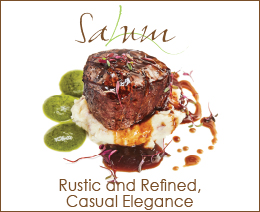
Thirty-three years ago, Barbara and David Kittrell and their partner, Michael Riffkind, established the Kittrell/Riffkind Art Glass Gallery in North Dallas. Michael Riffkind retired in 2014. In 2015, the Kittrells moved the gallery to share space with their sister gallery, Southwest Gallery, in a beautiful 116,000-square-foot building. Today, the gallery represents more than 250 talented contemporary glass artists.
When most people think of art glass, they think of traditional glassblowing with a blowpipe and a furnace in a hot shop. However, there are so many other ways to manipulate glass that it helps to have a quick primer to appreciate fully how magical and extraordinarily complex this medium can be. There are three overarching categories of glass art: hot, warm and cold glass.
Hot glass requires the artist to work with molten glass at about 2,000 degrees Fahrenheit, using a furnace, a torch or both. Once molten, the glass can be blown on a blowpipe, cast into a mold or manipulated to the desired shape using a blowtorch and various specialty tools and techniques.
Warm glass techniques are done using a kiln. This includes fusing, slumping, casting and pâte de verre. Fusing involves layering flat glass and heating it in the kiln. Once pieces are fused, they can be slumped, which allows the artist to manipulate the glass over a mold. Pâte de verre is a method in which glass granules, called frit, are cast into a specially prepared mold.

Cold glass includes cutting, polishing, engraving, sandblasting or etching, typically to finish or decorate a piece of art glass. It also includes architectural glass, such as leaded glass, beveled glass and mosaics. Many techniques can be combined with each other, as well as with wood, metals, stone and found objects. The result is magical.
“There are so many things you can do with glass; it’s truly an amazing medium,” Barbara Kittrell says. “We represent both established and emerging artists that do outstanding and innovative work, with an emphasis on larger sculptural works from top-tier makers.”
When asked about some of her favorites, Kittrell talks about a few artists the gallery represents and their impressive techniques. David Patchen, a true master of the medium, uses traditional Venetian glassblowing techniques to make elaborate, complicated glass canes, which he then slices into murrine. After arranging and heating canes and murrine, he transfers them to a pipe and manipulates them into magnificent jewel-toned vessels.

Artist Ross Richmond offers another example of what can be done with hot glass. Richmond hot sculpts his equine busts on a blowpipe with incredible skill. “Ross’ horses are just exquisite; he imbues them with amazing gesture and expression,” Kittrell says. Richmond also has a serene series of figures highly influenced by Native American and Asian cultures.
When you stop in the gallery, Carol Milne’s work is not to be missed. Milne creates colorful cast sculptures that resemble pairs of hands knitting. “Carol’s work is absolutely stunning,” Kittrell says. “Knitters especially love the accuracy of her stitches.”
In contrast to Milne’s delicate pâte de verre cast sculptures, Susan Gott ladles molten glass from a furnace into a prepared mold to create large sculptural works. She often places previously prepared glass elements into the sculpture during the casting process and stamps the surface with metal stamps. After days or weeks of annealing these large sculptures, she removes them from the kiln and manipulates the glass once it has cooled. She often grinds and polishes windows on the exterior surface so the interior of the piece can be seen.

Shane Fero’s birds are also a highlight of the gallery. “Shane is a flame worker who uses a torch to manipulate glass tubes and rods in the flame. He uses glass powders to add coloration and strings of colored glass to draw on his sculptures. They are then dipped in acid to give each one a wonderful, soft opaque surface,” Kittrell explains. An avid bird-watcher, Fero is working on a series of fabulous, colorful birds, some true to life, some fanciful. “They are very delicate, light as a feather, and thin as an eggshell,” Kittrell says. “They’re just fabulous.”
The gallery is open Tuesday through Saturday from 10 a.m. to 6 p.m. and Sunday from 1 p.m. to 5 p.m.
Robin Howard is a freelance writer in Charleston. See more of her work at robinhowardwrites.com.
previous page: David Patchen, Lagoon
left (top to bottom): Alex Bernstein, Shimmer;
Alexis Silk, Golden Grace
opposite page: Thomas Scoon, Emergence #2














